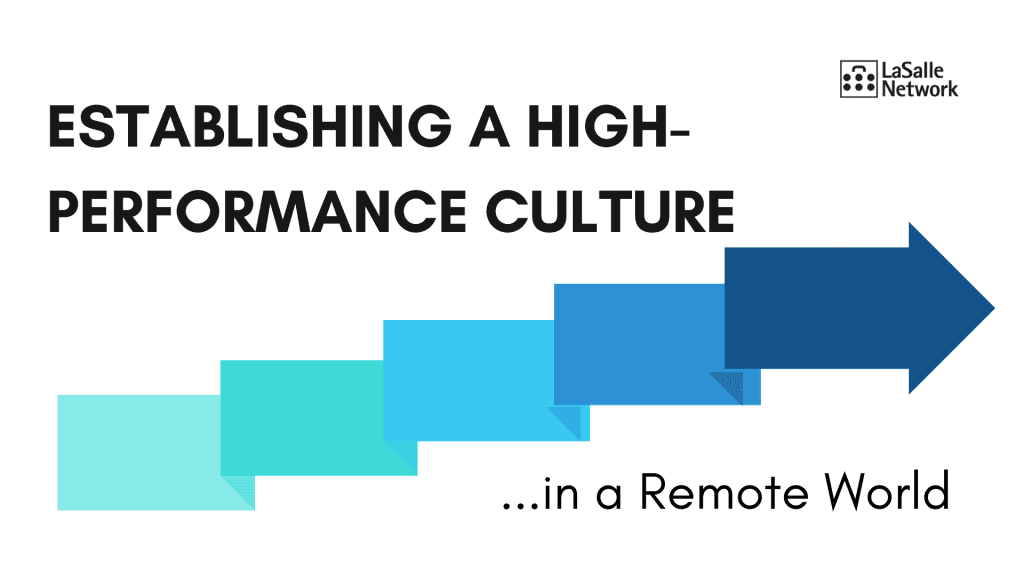According to the HPO Center, a high-performance organization is one that achieves financial and non-financial results that are exceedingly better than those of its peer group over a period of five years or longer. The pandemic quickly wreaked havoc on businesses across the world, causing immense financial loss, leading companies to pivot quickly to stay afloat.
After drastic labor cuts in the last few months, employees kept on the payroll have been called on to step up in a way many haven’t before to keep their company viable. This hustle and dedication resemble the activity of a high-performance culture, which if sustained, leads to improved long-term results.
Some examples of companies that have been recognized for this type of culture include Microsoft, Starbucks, and Domino’s. These companies have persevered through challenges such as increased competition, poor public relations, and a changing technological landscape better than many competitors.
While a high-performance culture is one many organizations have had in place pre-pandemic, it has likely been kicked into overdrive over the last four months to maximize every role within the organization. However, sustaining this productivity virtually adds another layer of complexity. We’re sharing 10 tips for maximizing your high-performing culture from afar.
Establish accountability:
In order to be successful in a position, virtual or not, employees need to know what the expectation of them is and what they are held accountable to achieving. When you tie an employee’s role to the success of another’s, it instills a responsibility to perform and a sense of accountability to the team to execute. If they fail, their peers do, and when they win, their peers celebrate that achievement, as well.
Establish clear objectives:
Especially as many remote employees manage their days, creating a plan with concrete deliverables will help keep them on track. Rather than tracking activity, a high-performance atmosphere relies on tangible results.
Improve collaboration:
High-performance cultures are highly collaborative. By tearing down the silos between teams and individuals in order to work more collectively, teams can avoid having fragmented information and incomplete projects. Leading with transparency, training teams to collaborate virtually, communicating regularly and tasking employees of different backgrounds to brainstorm together each help instill a group mindset. While working remotely, collaboration is even more important as companies are racing to execute and produce to keep operations running.
Evaluate performance regularly:
There should be frequent dialogue between manager and employee regarding the employee’s work product and/or activity. In-the-moment conversations can provide valuable knowledge and help set expectations for how employees should approach their work. Giving clear and direct feedback, good or bad, is essential to allow employees to pivot quickly and accomplish more.
Discussions should not only be used to go over how an employee has been contributing remotely, but also to check in on how they have been able to collaborate virtually with colleagues and how they are adjusting to increased standards. It’s also an opportunity to make a shift in what is not working and pivot into a new direction, quickly.
Make two-way transparency an expectation:
In a high-performing culture, things move too fast for employees to withhold ideas and emotions and, especially while working remotely, teammates need to feel comfortable disagreeing with one another’s ideas, so the best version is produced. This stems from leaders being transparent and setting the same expectation with their employees.
Do not tolerate poor attitudes:
A high-performance culture cannot withstand poor attitudes detracting from the energy of a group. Do not tolerate poor attitudes. Address them immediately, and if there is no change made, the role or company may no longer be the right fit for them.
Instill purpose into each employees’ work:
Another defining characteristic of high-performance cultures is employees finding purpose and meaning in their work. When employees are invested in their team’s goals and feel a sense of accomplishment, it fuels them to deliver and achieve more for the organization. By allowing employees to feel connected to and involved in the organization’s mission, as well as showcasing their direct contribution to the company, they can become more dedicated and invested in their work.
Celebrate wins:
High–performance cultures value their employees and celebrate accomplishments. Recognizing when an employee goes above and beyond is important to encourage and inspire others to do the same.
Lead with empathy:
Know when to give employees an extra push and when to give them a break. Being aware of emotions and leading teams with empathy is important in keeping employees engaged over long periods of time while going 100mph.
Provide proper training:
If you want employees to excel, provide them the right tools and resources to do so. Whether it be external resources, such as industry or role-specific conferences and continuing education, or internal trainings and one-on-one training sessions. Especially in today’s rapidly changing market, upskilling talent to perform to a higher standard will be crucial. Remember, to have a high-performing culture, you need high-performing employees, which comes with continued education and training.
Prepare teams to be agile.
The market is changing quickly, and your team must be prepared to adjust on the fly. Prepare employees for projects to be pulled and pushed, often with little notice. The ability to change focus quickly and excel on a new initiative is what differs high-performing cultures from the rest.
Many companies have been working with an “all hands on deck” mentality, and cultivating a high-performance culture is a way of making that productivity sustainable. Cultivating a high-performance culture is what will differentiate the organizations who excel coming out of this pandemic from the rest.
Interested in hiring high performers? Let us help! Contact us here.





